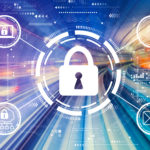The transportation and logistics industry is subject to constant change, and along with that comes constant pressure to source new, innovative techniques to increase efficiency. Because of the industry’s large and fragmented nature, it is crucial to understand global technology trends to create a competitive advantage. Technological advances provide opportunities to drive down service costs, identify negative trends, and optimize company procedures. Organizations that utilize these advances to identify issues, pinpoint root causes, and respond quickly with solutions are one step ahead of their competition.
There are dozens of technology trends that have already significantly affected the industry. Technological advancements have increased productivity and transparency in the supply chain, minimizing costs and errors. While many companies are taking advantage of these technological advancements, most are yet to bite the bullet. This may be due to a multitude of reasons, including uncertainty about which technologies will prevail. It’s challenging to predict what will work best in the long run, but familiarizing yourself with these disruptive trends may help you feel more equipped to adopt any new advances.
Automation
Something abundantly clear is the need for more standardization and automation of processes. To handle data-heavy processes and continue to meet rising consumer demands, many logistics companies are already utilizing advanced technologies, such as cloud-based software, to automate their operations. Further, with labor shortages on the rise, and robots becoming increasingly adept at making decisions and adapting independently, industry observers expect the use of robots to become increasingly ubiquitous. Workers may worry that robots will eventually replace them, but on the contrary, the addition of automated systems could make their jobs more comfortable and enjoyable. Automated devices can handle monotonous, trying tasks, allowing workers to focus on more favorable activities.
The use of a unified technology platform can provide benefits for workers and customers alike. Having various logistics solutions with diverse standards or dealing with data in different file formats creates confusion and overwhelm. Automation of an organization’s operations and information flow can make it easier to provide customers with consistent, exceptional service. Data standardization offers a way for businesses to ensure their product attributes are accurate and up-to-date. Adopting these practices enables effective communication and collaboration.
Business Intelligence
Companies are also using business intelligence (BI) more often to improve supply chain and transportation operations. BI tools provide useful information that allows for the identification of negative trends in costs and performances. Organizations then use this information to pinpoint root causes so they can take corrective action as quickly as possible. Certain BI tools even allow companies to conduct ‘what-if’ analyses to compare different transportation strategies and tactics and weigh their service and cost trade-offs. Ultimately, businesses can utilize the information provided by BI tools to boost supply chain efficiency, enhance customer service, and improve relationships with logistics vendors.
As indispensable as efficiency, supply chain visibility is a critical component in the growth and success of any company. Connected supply chains provide more opportunities to receive BI, which can uncover issues with procurement, product quality, and delivery. Ample supply chain visibility through technology can help mitigate risk and allow companies to identify and analyze problems quickly.
Big Data
The use of big data in logistics can improve supply chain efficiency as well. For example, the last mile of a supply chain is known to be exceptionally inefficient. Varying circumstances can affect this leg of the delivery, such as difficult-to-reach delivery locations or a package that requires a signature.
By incorporating big data and predictive analytics, organizations can bring a level of transparency to the last stretch of the supply chain. Through the use of IoT and GPS-enabled smartphones, companies can provide the customer with live updates for a low price. This isn’t only valuable for the customer – it allows logistics companies to spot faulty patterns and optimize their delivery strategies and routes. Route optimization can further reduce overall costs, in addition to truck mileage, the number of trucks on the road, the hassle of planning, and CO₂ emissions.

Sustainability
Climate change is partially due to greenhouse gas emissions, and this is a growing cause for concern that will undoubtedly affect the transportation industry in years to come. Companies will need to show focus and progress on sustainable solutions if they wish to remain relevant. And, as climate change and CO₂ emissions continue to gain urgency, customers will increasingly demand that suppliers assist them in lowering their carbon footprint.
This focus on sustainability will promote development in related areas such as emerging technologies and alternative fuels. Companies that choose to concentrate on creating sustainable supply chains, will gain a competitive edge.
Conclusion
While staying up to date with current technological trends may seem complex or overwhelming for many, it is unquestionably critical in order to enhance efficiency and remain competitive. The logistics industry is already benefiting tremendously from the latest technology, and it will only keep growing as advances are made and transformation continues.
There are many ways to learn and keep up with the latest technology. The Internet can provide you with a constant feed of information as it’s released – through blogs, forums, podcasts, and social media. Platforms such as LinkedIn allow you to interact with industry experts across the world. You can also stay informed by following industry social media accounts directly, from large corporations to individuals you respect. Be careful not to get overexcited and implement new technologies without thoroughly understanding your needs and objectives. Companies should review their operations frequently and acquire or develop technologies to address any inefficiencies or customer needs. Actively seeking team members’ feedback will encourage an innovative culture and incentivize team members to share and develop ideas of their own. Businesses would also benefit from seeking feedback on these issues from their customers.
New technologies are rapidly changing the transportation and logistics industry, making it more imperative than ever to act on these recommendations. Customer expectations are increasing, and the transportation and logistics industry will continue to evolve as more advances are made. Instead of waiting in apprehension, organizations would be wise to match this upward trajectory – or risk being left behind.





